 There's nothing more delicious than mystery writers cooking up trouble
There's nothing more delicious than mystery writers cooking up trouble
Used to be, when you finished a mystery, you’d close the book, settle back into your armchair with a contented sigh and savor the moment. But these days, judging by the number of crime novels that come with a recipe or two tacked into the last pages, you’re evidently supposed to jump up and head for the kitchen.
Now, I’m really not sure how a recipe for Cheesy Shrimp Puffs or Dutch German Chocolate Chip Cookies complements the gripping tale of a crime-busting poodle groomer bringing a serial killer librarian to justice, but these culinary flourishes are all the latest rage. A quick scan through the mystery section of your local bookstore will bear this out. There are so many of these “recipe mysteries” out there that they often warrant their own display.
But right from the start there’s been a curious link between food (and drink) and crime fiction. You could even get all biblical and pin it on Eve (the original femme fatale). It’s not that big a stretch to see the forbidden apple as the MacGuffin, the Garden of Eden as the first-ever Locked Room and the Big Guy as the first Great Detective (although, honestly, with only two suspects the case wasn’t all that hard to crack).
However, for our purposes, let’s just note that one of the earliest Sherlock Holmes stories, “The Adventure of the Blue Carbuncle” (1892), revolved around a roast Christmas goose. And even earlier than that, one of Edgar Allan Poe’s classic crime stories was “The Casque of Amontillado” (1846), wherein the narrator/murderer uses a cask of a rare and valuable sherry to lure his former friend to a secluded wine cellar—and his doom.
 But the most obvious association between food and felony was made in Rex Stout’s Fer-de-Lance (1934), which introduced Nero Wolfe, the world’s premiere foodie detective, whose entire life revolved largely around food and beer, mostly prepared by his brilliant personal chef, Fritz. Throughout his long career, Wolfe’s appetite for food and drink never flagged. The hardcover edition of the fifth novel, Too Many Cooks (1938) cemented that link, with Wolfe at one point lecturing 15 of the world’s greatest chefs on American cooking. The pivotal banquet has been cited by Nora Ephron and others as the “best meal in English literature,” and the novel even boasted recipes in the margins.
But the most obvious association between food and felony was made in Rex Stout’s Fer-de-Lance (1934), which introduced Nero Wolfe, the world’s premiere foodie detective, whose entire life revolved largely around food and beer, mostly prepared by his brilliant personal chef, Fritz. Throughout his long career, Wolfe’s appetite for food and drink never flagged. The hardcover edition of the fifth novel, Too Many Cooks (1938) cemented that link, with Wolfe at one point lecturing 15 of the world’s greatest chefs on American cooking. The pivotal banquet has been cited by Nora Ephron and others as the “best meal in English literature,” and the novel even boasted recipes in the margins.
Since then, we’ve been inundated with sleuths who aren’t afraid to chow down—or cook up a storm. Virginia Rich, at the time the food editor at Sunset Magazine, is often cited as the creator of the modern “culinary mystery” subgenre, writing three culinary mysteries in the '80s featuring amateur sleuth/cooking school teacher Eugenia Potter.
Not that the affection for sustenance is limited to traditional or cozy sleuths. Sure, Joanne Fluke’s Hannah Swenson, the owner and proprietor of a bakery, and Diane Mott Davidson’s Goldy Schulz, a caterer, know which end of a spatula to use, but so do such tough guys as the late Robert B. Parker’s Spenser, certainly nobody’s idea of a cream puff, whose personal code of personal autonomy includes being able to cook his own meals, thankyouverymuch. The heavyweight 1970s TV eye Frank Cannon also clearly loved his food, and Manuel Vázquez Montalbán’s Spanish gumshoe Pepe Carvalho may have been the only private eye since Nero Wolfe to have a personal cook. The love of food and cooking also infuses Graham Swift’s bittersweet The Light of Day (2003), featuring morose British sleuth George Webb who discovers, after years of “fuelling up on canteen grub,” that he has a flair for cooking. And we should mention Hardbroiled (2003), edited by Michael Bracken, a collection of tough private eye stories in which food plays an important role.
The Classics
But the ultimate confirmation of the food-crime analogy is the mystery-themed cookbook, a notion that has proven infinitely attractive to both readers and publishers over the years.
In fact, the real mystery is why it took until 1973 to convince Stout to compile The Nero Wolfe Cookbook. But let’s face it—no collection of crime cookbooks would be incomplete without this one. Attractively designed and handsomely illustrated with period pics of the Big Apple, it showcased over 200 recipes from Fritz’s personal collection (all presumably approved by Wolfe, of course). And the Great Man stirred in a few himself. Who knew there were so many ways to prepare shad roe?
Not that Nero Wolfe is the only gumshoe to find himself on the culinary bookshelf. Here are a few others well worth sharpening your knives for.
 Naturally, there are several dozen Holmes-themed cookbooks but Dining With Sherlock Holmes: A Baker Street Cookbook (1990) by Julia Carlson Rosenblatt and Frederic H. Sonnenschmidt, featuring complete menus taken from the canon, is still one of the most intriguing, thanks to its reverence, superb research, and attention to detail. Rosenblatt, with the aid of Sonnenschmidt, a professor at the Culinary Institute of America, planned and put on several Sherlockian dinners over the years.
Naturally, there are several dozen Holmes-themed cookbooks but Dining With Sherlock Holmes: A Baker Street Cookbook (1990) by Julia Carlson Rosenblatt and Frederic H. Sonnenschmidt, featuring complete menus taken from the canon, is still one of the most intriguing, thanks to its reverence, superb research, and attention to detail. Rosenblatt, with the aid of Sonnenschmidt, a professor at the Culinary Institute of America, planned and put on several Sherlockian dinners over the years.
Also worth investigating is The Sherlock Holmes Victorian Cookbook: Favourite Recipes of The Great Detective & Dr. Watson (1997) by William Bonnell, which takes a more lighthearted, less scholarly approach, including recipes for foods that Holmes “might” have eaten, including Bohemian Scandal Pickled Eggs. Hypothetical fun it may be, but its cred is intact—thanks to the inclusion of several Sidney Paget pen and ink illustrations from The Strand.
The Lord Peter Wimsey Cookbook by Elizabeth Bond Ryan & William J. Eakins (1981) should do it for fans of Dorothy L. Sayers’ urbane, upper-class detective and sophisticated cuisine, though we commoners may be wondering where the recipes for Spotted Dick are.
Kids’ Meals
The Whistling Bagpipe Crunchies? Hidden Staircase Biscuits? Old Clock Ice Cream Pie? You must be browsing through The Nancy Drew Cookbook: Clues to Good Cooking by Carolyn Keene (1973), another classic. Simple but fun recipes for younger cooks, with occasional tips from Nancy herself. Becoming a good cook is “no mystery,” she says. You just “add your own special touch.”
Even younger kitchen-savvy sleuths will go buggy over Chet Gecko’s Detective Handbook (and Cookbook) by Bruce Hale (2005), which serves up numerous tips on surveillance and disguises for would-be sleuths, as well as such mouthwatering yummies as Tick Taco Salad, Sweet Potato-Bug Pie, and Blowfly Banana Muffins recommended by Hale’s wisecracking lizard gumshoe.
 Contemporary Cooks
Contemporary Cooks
No less whimsical, although purportedly for adults, is Sneaky Pie’s Cookbook for Mystery Lovers (1999) by Sneaky Pie Brown. Evidently cats don’t just solve mysteries now, they also cook and write. This is about evenly divided into recipes for humans and four-legged animals, and leavened with anecdotes and off-the-cuff cooking tips, although the lack of any decent mice recipes may be disappointing for feline readers.
At least Koko and Yum Yum didn’t presume to write The Cat Who... Cookbook by Julie Murphy and Sally Abney Stempinski (2000), although this one, which features recipes culled from the popular series by Lillian Braun, also includes a special section on cooking for kitties. But once again, a shocking lack of mouse recipes! Still hungry? In 2006, the authors followed up with The Cat Who... Reunion Cookbook.
For those humans savoring something a little more continental, may we suggest Madame Maigret’s Recipes by Robert J. Courtine (1975)? As Inspector Georges Simenon fans know, Madame Maigret is a plus excellent cook, and this classical French cookbook is de rigeur. Julia Child is all fine and dandy, but how many mysteries did she solve? Huh? HUH? Bon appétit.
TV tie-in cookbooks are a dime a dozen, although there aren’t that many devoted to crime shows. One enjoyable exception is the deliciously cheesy The Cop Cookbook (1997) by Greta Garner-Hewitt, Ken Beck, and Jim Clark. Subtitled “Arresting Recipes from the World’s Favorite Cops, Good Guys, and Private Eyes,” it features over 300 recipes by assorted actors who play police officers and detectives in film and on television, as well as a few real life ringers. Thespian contributors include Clint Eastwood, Peter Falk, Tom Selleck, Dennis Franz, Tommy Lee Jones, Francis McDormand, Jack Webb, James Garner (who just happens to be Greta’s dad), and a cast of thousands. Recipes include CHIPS Party Patrol Mix, Rockford’s Trailer Dressing, and Danno’s Lamb Shanks (from Hawaii Five-O, of course). The deck is stacked with numerous black and white stills from assorted shows, and a portion of the proceeds go to The National Peace Officers Memorial Service Fund to aid families of officers killed in the line of duty. Cook ‘em, Danno.
Slightly less star-studded, perhaps, but more democratic in spirit is The Murder She Wrote Cookbook, edited by Tom Culver and Nancy Goodman Iland (1996), containing more than 350 recipes from not just the cast but the crew, plus several of the guest stars who appeared on the long-running show. Who knew Best Boys could cook? Mind you, given Cabot Cove’s high mortality rate, you may want to hire a tester before consuming these recipes yourself.
 Speaking of long-running, Food to Die For by Patricia Cornwell and Marlene Brown (2001) presents recipes taken from (or inspired by) her ever-popular series featuring forensic specialist Kay Scarpetta, including Miami-Style Chili with Beer (from All That Remains) and Jack Daniel’s Chocolate-Pecan Pie (The Body Farm). Wash all the knives carefully, just in case, and be careful what you take out of the fridge. Kay does seem to bring her work home, after all...
Speaking of long-running, Food to Die For by Patricia Cornwell and Marlene Brown (2001) presents recipes taken from (or inspired by) her ever-popular series featuring forensic specialist Kay Scarpetta, including Miami-Style Chili with Beer (from All That Remains) and Jack Daniel’s Chocolate-Pecan Pie (The Body Farm). Wash all the knives carefully, just in case, and be careful what you take out of the fridge. Kay does seem to bring her work home, after all...
Mma Ramotswe’s Cookbook (2009) by Stuart Brown is the perfect choice for fans of the No. 1 Ladies’ Detective Agency series. Brew yourself a nice cup of red bush tea and start planning tonight’s dinner menu. This amply illustrated culinary tour offers an intriguing glimpse into Botswana’s traditions and culture, with recipes for traditional stew, fat cakes (doughnuts), jams, and other African delicacies, all accompanied with many excerpts from the novels. The proceeds from the book’s sales are to be shared among several African charities. Now you, too, can become traditionally built, and all for a good cause. Series creator Alexander McCall Smith brings a foreword to the feast.
Want Italian? The latest mystery-themed cookbook springs from one of the genre’s most renowned foodie detectives: Donna Leon’s beloved Commissario Guido Brunetti. Brunetti’s Cookbook (2010) by the mystery writer’s best friend, Roberta Pianaro, has plenty of scrumptious color photographs, excerpts from the novels, and several “culinary stories” and essays by Leon. But of course the soul of any cookbook is its recipes and this one collects a mouthwatering assortment of over 90 Venetian dishes. I mean: Veal Fillets with Fennel Seeds, Garlic, Rosemary, and Bacon. If you’re not licking your lips over that one, you might be dead.
And they just keep coming. The latest mystery-themed cookbook is Have Faith in Your Kitchen, a selection of recipes culled from the popular Faith Sibley Fairchild foodie mysteries by Katherine Hall Page. The Agatha-winning author dishes up some juicy background on her caterer/chef/amateur snoop, and the role food plays in her life. If the pleasantly groan-inducing title doesn’t convince you that the author’s skillet is in the right place, then the recipes for such fare as Smothered Pork Chops or the exquisite-but-oh-so-simple Salad with Warm Cheese Toasts (goat cheese, my friends, goat cheese!) just might.
But perhaps it’s no surprise detectives care about their food. In a world where evil is alive and well, and what passes for justice is too often random, food may be the one tiny piece of our helter-skelter world we can put right; a place where we can be kind to others. And ourselves.
Supper’s ready! 
Faith Fairchild’s Mini Zucchini Fritters
What you need:
1 jumbo egg
1 tablespoon unsalted butter, melted
1/4 teaspoon salt
1-1/2 cups finely grated zucchini 2 teaspoons unsalted butter 1-1/4 cups milk
1 cup flour, sifted
Pinch of freshly ground pepper
1 shallot, minced
Beat the egg, milk, and melted butter together and add to the flour, salt, and pepper. Mix until smooth but do not over beat.
Put the zucchini in a piece of cheesecloth or a clean dish towel and squeeze out the excess liquid. Sauté with the shallot in two teaspoons of butter until soft, about 3-5 minutes. Add the zucchini mixture to the batter and drop the batter onto a well-greased, hot griddle in rounds, approximately 2-1/2 inches in diameter. Turn when golden brown. Makes 36 fritters.
Straight from the griddle, these are a nice accompaniment to a main course, fanned on the plate with grilled meat or fish. For Faith’s wedding hors d’oeuvres, spread the room temperature fritters with salsa, topped with a dollop of sour cream or smoked salmon, or with sour cream and a twist of corriander or dill. The combinations are limitless, though, and these fritters may be made ahead and frozen.
Reprinted with permission from Have Faith in Your Kitchen, Katherine Hall Page, Orchises Press, September, 2010, tpb $19.95. Also available as a signed, boxed, limited hardcover edition, $125. Orchises Press, P.O. Box 320533, Alexandria, VA 22320-4533. 
This article first appeared in Mystery Scene Fall Issue #116.

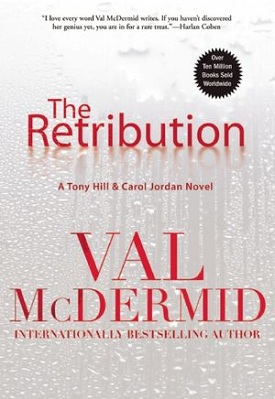 The Olympics represent something deeper—patriotism, enthusiasm, commitment, sacrifice, and sheer joy.
The Olympics represent something deeper—patriotism, enthusiasm, commitment, sacrifice, and sheer joy.  Mark Billingham
Mark Billingham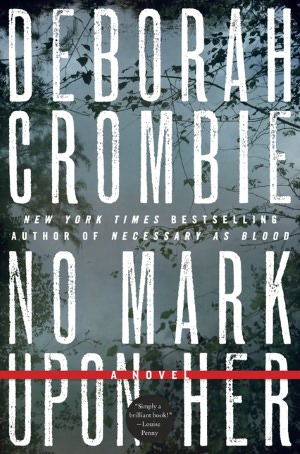 Elizabeth Haynes
Elizabeth Haynes Brenda Leigh Johnson ends her seven-year reign as Deputy Chief of the Los Angeles Police Department’s Major Crimes unit in TNT’s The Closer on Monday, Aug. 13.
Brenda Leigh Johnson ends her seven-year reign as Deputy Chief of the Los Angeles Police Department’s Major Crimes unit in TNT’s The Closer on Monday, Aug. 13.  The steely, soft-spoken Raydor also is a bottom-line leader who knows that a confession and deal that puts a killer behind bars without a trial can save the department millions of dollars.
The steely, soft-spoken Raydor also is a bottom-line leader who knows that a confession and deal that puts a killer behind bars without a trial can save the department millions of dollars.  Stieg Larsson
Stieg Larsson Michael Connelly’s Harry Bosch
Michael Connelly’s Harry Bosch  If the trailers for Killing Them Softly, the upcoming Brad Pitt vehicle look familiar, then you must be a fan of George V. Higgins.
If the trailers for Killing Them Softly, the upcoming Brad Pitt vehicle look familiar, then you must be a fan of George V. Higgins. Is
Is  Conversely,
Conversely, 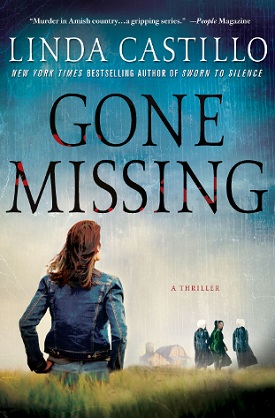 Whoever would have thought that the Amish would be a hot topic for mystery fiction.
Whoever would have thought that the Amish would be a hot topic for mystery fiction. 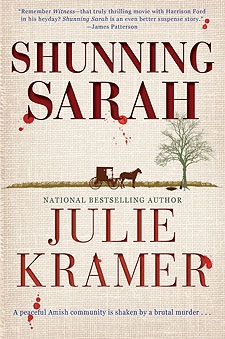 Shunned by her family, she went off to Columbus where she became a police detective. Still estranged from her brother, sister and their families, she has returned to Painters Mill as the town’s police chief. Castillo shows Kate’s respect and appreciation for the Amish customs, while also illustrating why she rejected that life for the “English ways.”
Shunned by her family, she went off to Columbus where she became a police detective. Still estranged from her brother, sister and their families, she has returned to Painters Mill as the town’s police chief. Castillo shows Kate’s respect and appreciation for the Amish customs, while also illustrating why she rejected that life for the “English ways.”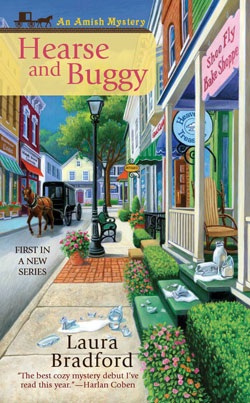 Kramer’s usual mix of suspense, humor and meticulous research in
Kramer’s usual mix of suspense, humor and meticulous research in 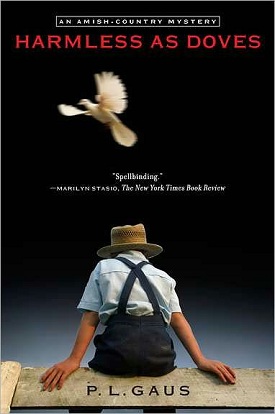 Vannetta Chapman
Vannetta Chapman
 Ex-Detective Sergeant Gerry Standing (Dennis Waterman) used to be quite the ladies’ man, having been married three times. Former Detective Chief Superintendent Jack Halford (James Bolam) quit the force to care for his wife before she died. Ex-Detective Inspector Brian Lane (Alun Armstrong) is obsessive-compulsive and lacks social skills.
Ex-Detective Sergeant Gerry Standing (Dennis Waterman) used to be quite the ladies’ man, having been married three times. Former Detective Chief Superintendent Jack Halford (James Bolam) quit the force to care for his wife before she died. Ex-Detective Inspector Brian Lane (Alun Armstrong) is obsessive-compulsive and lacks social skills. 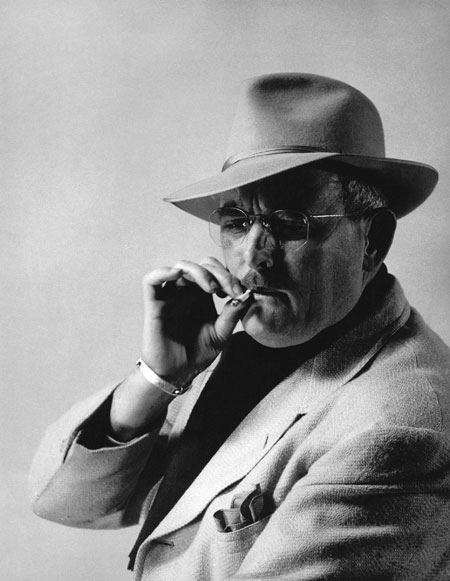 Pulp Rises to the Top
Pulp Rises to the Top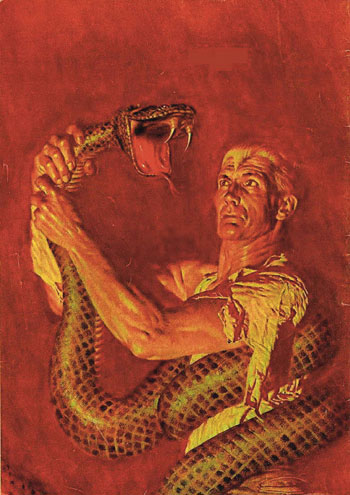
 Like all pulpsters, Dent’s writing was often less than polished, but that mattered little: What the pulp magazine audience demanded were atmosphere, thrills, exotic adventure, and action, and those are what Dent delivered every time. Picking up a Lester Dent story is often like walking into a movie in the middle of a chase scene. And in a marketplace where speed was money, he wrote faster than anybody: He once bragged that, with the help of a Dictaphone, he wrote eight novels in seven weeks.
Like all pulpsters, Dent’s writing was often less than polished, but that mattered little: What the pulp magazine audience demanded were atmosphere, thrills, exotic adventure, and action, and those are what Dent delivered every time. Picking up a Lester Dent story is often like walking into a movie in the middle of a chase scene. And in a marketplace where speed was money, he wrote faster than anybody: He once bragged that, with the help of a Dictaphone, he wrote eight novels in seven weeks. Doc Savage Magazine folded in 1949, and while that meant a loss of regular income for Dent, he was at least able to work under his own name (the only Doc Savage story to carry the Lester Dent byline was 1944’s The Derelict of Skull Shoal, and that was by mistake). Dent managed to break into the slick magazine market, publishing stories in Collier’s Weekly and The Saturday Evening Post, all the while turning out gritty, hardboiled fare for Doubleday Crime Club, Ace, and Gold Medal. His raw, tough 1952 Gold Medal opus Cry at Dusk alone would have been enough to turn the Boy Scout–ish Doc Savage from bronze to crimson!
Doc Savage Magazine folded in 1949, and while that meant a loss of regular income for Dent, he was at least able to work under his own name (the only Doc Savage story to carry the Lester Dent byline was 1944’s The Derelict of Skull Shoal, and that was by mistake). Dent managed to break into the slick magazine market, publishing stories in Collier’s Weekly and The Saturday Evening Post, all the while turning out gritty, hardboiled fare for Doubleday Crime Club, Ace, and Gold Medal. His raw, tough 1952 Gold Medal opus Cry at Dusk alone would have been enough to turn the Boy Scout–ish Doc Savage from bronze to crimson!
 The Code of Doc Savage
The Code of Doc Savage  There's nothing more delicious than mystery writers cooking up trouble
There's nothing more delicious than mystery writers cooking up trouble



 In October, Donna Leon will publish her first novel that is not part of her Commissario Guido Brunetti series.
In October, Donna Leon will publish her first novel that is not part of her Commissario Guido Brunetti series.
 The films based on these novels keep the spirit of the author’s stories while also showing us a Sweden most of us have never seen. It helps, too, that the cinematography is outstanding.
The films based on these novels keep the spirit of the author’s stories while also showing us a Sweden most of us have never seen. It helps, too, that the cinematography is outstanding.  The Dogs of Riga
The Dogs of Riga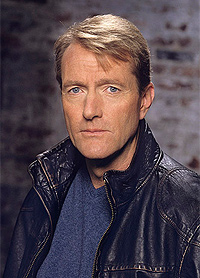 My first milestone as a reader
My first milestone as a reader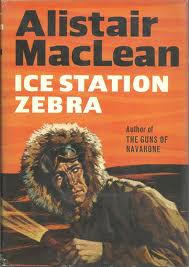 But...the first-person storyteller didn't play fair. He withheld great chunks of set-up and action quite arbitrarily. Not exactly an unreliable narrator (not that I would have understood that term back then)
But...the first-person storyteller didn't play fair. He withheld great chunks of set-up and action quite arbitrarily. Not exactly an unreliable narrator (not that I would have understood that term back then)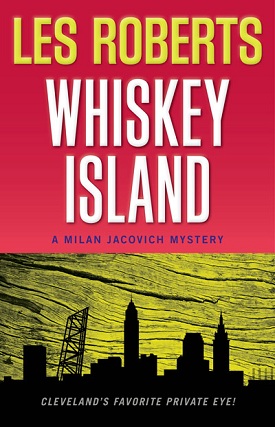
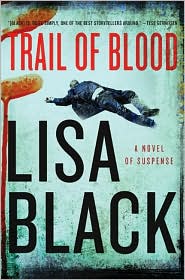 city. . . . Black keeps the level of suspense high as she believably switches the action from the 1930s to present day, contrasting Cleveland’s atmosphere and nuances during the Great Depression with those of the 21st century.”
city. . . . Black keeps the level of suspense high as she believably switches the action from the 1930s to present day, contrasting Cleveland’s atmosphere and nuances during the Great Depression with those of the 21st century.” 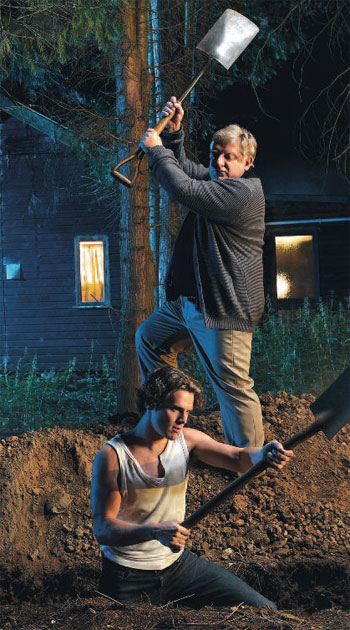 Acknowledged Crime Classics That Will Not Die
Acknowledged Crime Classics That Will Not Die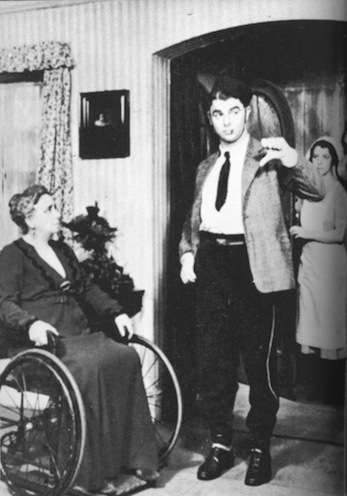
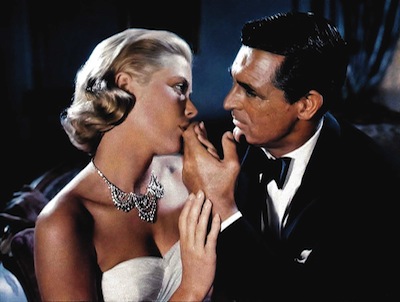 Clever banter, international travel, and a talent for twists
Clever banter, international travel, and a talent for twists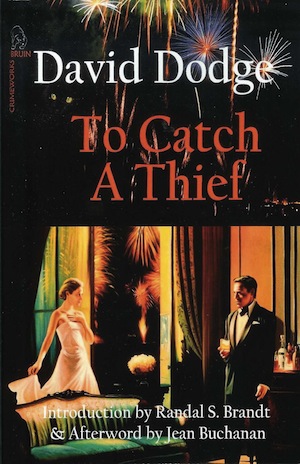 The strengths noted in Dodge’s later fiction and travel writing are on display here. There is a strong sense of the Bay Area locale, augmented in this edition by street maps and a back cover of vintage postcards. The character-based humor is exemplified by the various sunburn remedies Whit is offered on returning from his aborted vacation. The details of the period’s tax laws, key to the plot, are both authoritative and painlessly integrated into the story. Dodge apparently pictured himself in the role of his hero. Whit remarks that his picture in the newspaper makes him look like Andy Gump, the chinless, brush-mustached lead character of a popular comic strip. Photos of Dodge with a somewhat less assertive mustache and slightly receding chin suggest a laugh at his own expense.
The strengths noted in Dodge’s later fiction and travel writing are on display here. There is a strong sense of the Bay Area locale, augmented in this edition by street maps and a back cover of vintage postcards. The character-based humor is exemplified by the various sunburn remedies Whit is offered on returning from his aborted vacation. The details of the period’s tax laws, key to the plot, are both authoritative and painlessly integrated into the story. Dodge apparently pictured himself in the role of his hero. Whit remarks that his picture in the newspaper makes him look like Andy Gump, the chinless, brush-mustached lead character of a popular comic strip. Photos of Dodge with a somewhat less assertive mustache and slightly receding chin suggest a laugh at his own expense. Though Hitchcock’s literary adaptations often diverged considerably from their sources (e.g., The Thirty-Nine Steps or The Lady Vanishes), John Michael Hayes’ brilliant and witty script for To Catch a Thief, released in 1955, follows the book rather closely, keeping the broad outlines of the plot while compressing and simplifying the action. Cary Grant, of course, is not called upon to shave back his hairline or wear a fat suit, and some important characters, particularly the young French woman Danielle, play the same general role with significant differences. The other criminals who knew Robie in the Resistance, supportive and still on the wrong side of the law in the novel, are apparently reformed and hostile to him in the screen version. One prominent character in the novel, Robie’s straight-arrow friend Paul, doesn’t even appear in the film. The rooftop action scene in which Robie unmasks his imitator is of course a cinematic natural, but the events that follow are somewhat different. While Grant and Grace Kelly provide all the romance needed on screen, a secondary romantic subplot in the book makes necessary a trickily orchestrated conclusion that is not replicated in the film. Dodge’s novel is much more complexly plotted and morally ambiguous. Readers who already know the movie can appreciate these extra touches without reducing their admiration for Hitchcock’s version.
Though Hitchcock’s literary adaptations often diverged considerably from their sources (e.g., The Thirty-Nine Steps or The Lady Vanishes), John Michael Hayes’ brilliant and witty script for To Catch a Thief, released in 1955, follows the book rather closely, keeping the broad outlines of the plot while compressing and simplifying the action. Cary Grant, of course, is not called upon to shave back his hairline or wear a fat suit, and some important characters, particularly the young French woman Danielle, play the same general role with significant differences. The other criminals who knew Robie in the Resistance, supportive and still on the wrong side of the law in the novel, are apparently reformed and hostile to him in the screen version. One prominent character in the novel, Robie’s straight-arrow friend Paul, doesn’t even appear in the film. The rooftop action scene in which Robie unmasks his imitator is of course a cinematic natural, but the events that follow are somewhat different. While Grant and Grace Kelly provide all the romance needed on screen, a secondary romantic subplot in the book makes necessary a trickily orchestrated conclusion that is not replicated in the film. Dodge’s novel is much more complexly plotted and morally ambiguous. Readers who already know the movie can appreciate these extra touches without reducing their admiration for Hitchcock’s version.
 During her time, Christie was the world's bestselling author with only the Bible and Shakespeare's works selling more.
During her time, Christie was the world's bestselling author with only the Bible and Shakespeare's works selling more. 
 Michael Connelly
Michael Connelly In
In  In accepting the award, Connelly stated, “When I was 13 and spending hot summer days in the air conditioning afforded by the Fort Lauderdale public library, a librarian made me read To Kill a Mockingbird. I discovered a story about a lawyer who was forthright and willing to do the right thing, even at great risk and cost to himself and those he loved. That is the definition of hero I have endeavored to capture in my own work. This honor tells me I’m on the right track,” Connelly was quoted in the press release.
In accepting the award, Connelly stated, “When I was 13 and spending hot summer days in the air conditioning afforded by the Fort Lauderdale public library, a librarian made me read To Kill a Mockingbird. I discovered a story about a lawyer who was forthright and willing to do the right thing, even at great risk and cost to himself and those he loved. That is the definition of hero I have endeavored to capture in my own work. This honor tells me I’m on the right track,” Connelly was quoted in the press release. 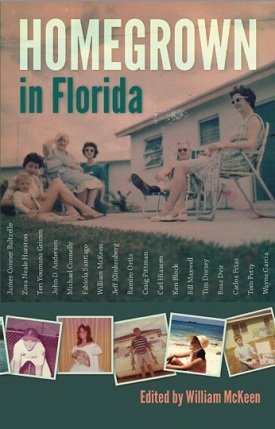 To mark that 20th anniversary, Connelly’s publisher Little, Brown has literally shown him the road.
To mark that 20th anniversary, Connelly’s publisher Little, Brown has literally shown him the road. 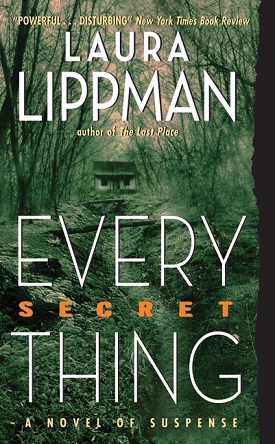

 Detectives and music just seems a natural fit. But the soundtrack of mysteries is fodder for another blog.
Detectives and music just seems a natural fit. But the soundtrack of mysteries is fodder for another blog. Leon also helps to find and audition new singers and choose new projects for recording and performance, according to her publisher.
Leon also helps to find and audition new singers and choose new projects for recording and performance, according to her publisher.
 Hank Phillippi Ryan
Hank Phillippi Ryan

 Debuting on BBC in 2007, the series stars Martin Shaw as Gently, and Lee Ingleby as Detective Sergeant John Bacchus, his younger partner with the Paul McCartney haircut. Simon Hubbard mans the police station front desk as PC Taylor.
Debuting on BBC in 2007, the series stars Martin Shaw as Gently, and Lee Ingleby as Detective Sergeant John Bacchus, his younger partner with the Paul McCartney haircut. Simon Hubbard mans the police station front desk as PC Taylor.  Mystery Scene reviews Elementary, the latest Sherlock Holmes adaptation for television debuting on CBS.
Mystery Scene reviews Elementary, the latest Sherlock Holmes adaptation for television debuting on CBS. In fact much of the first episode is dedicated to setting up the relationship between Holmes and Watson, who, to answer the second question above, in no way inhibits the proceedings by being a woman. Liu’s Dr. Watson comes with a dark backstory in which she was forced out of the profession due to malpractice. Holmes quickly ascertains this background, of course, based on her hands, her current unglamorous choice of employment, and a parking ticket that falls out of her purse. There is chemistry between these two, and when Holmes’ observations get a little too personally invasive, Liu is more than able to hold up Watson’s end of the verbal back and forth.
In fact much of the first episode is dedicated to setting up the relationship between Holmes and Watson, who, to answer the second question above, in no way inhibits the proceedings by being a woman. Liu’s Dr. Watson comes with a dark backstory in which she was forced out of the profession due to malpractice. Holmes quickly ascertains this background, of course, based on her hands, her current unglamorous choice of employment, and a parking ticket that falls out of her purse. There is chemistry between these two, and when Holmes’ observations get a little too personally invasive, Liu is more than able to hold up Watson’s end of the verbal back and forth.
 “They come from all over,” said Robin Agnew.
“They come from all over,” said Robin Agnew.
